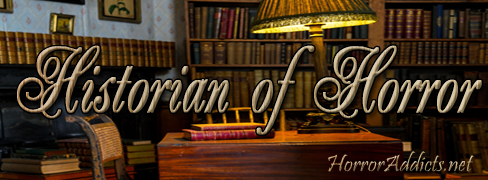Too often we confuse ‘best’ with ‘favorite’. And vice versa. I contend frequently with folks on social media who insist that their favorite movie (or song or book) is the best ever, despite the probability that they’ve never experienced any of the recognized classics that routinely top the lists compiled by prestigious bodies such as the American Film Institute, and therefore have no reasonable basis for comparison. I mean, really. The Shawshank Redemption is a very good film, true, but is it actually better than Citizen Kane? Lawrence of Arabia? Tokyo Story? Le Grande Illusion?
Pardon me while I laugh myself into a terminal case of hiccups.
Likewise, everyone seems to have their own personal favorite film version of Charles Dickens’ classic novella, A Christmas Carol. Okay, so Muppets are all very nice, and musicals, as well, and certainly Mr. Magoo’s interpretation of Ebenezer Scrooge cannot be discounted. Legitimate favorites, all, but let’s be serious about this. None are THE best.
A Christmas Carol is first and foremost a ghost story; a horror tale that, properly presented, chills the blood as much as it warms the cockles of the heart. It is also a commentary on the depraved heartlessness of unrestrained capitalism, and it is the combination of all these aspects that makes the version starring Alastair Sim far and away the best interpretation ever captured on celluloid.
I will fight you on this.
I have to admit that the 1962 telefilm, Mr. Magoo’s Christmas Carol, is my personal favorite and has been since I was a small child, but no, it is not the best. The acme, the absolute pinnacle of cinematic scroogismus, is the 1951 British film, Scrooge.
Firstly, it’s in glorious black & white. I know we have entire generations suffering under the delusion that movies must be in color, but color is the enemy of filmcraft in so many ways. There is no special effect so overused as color.
You simply cannot create the required deep shadows and existential angst needed to tell this story perfectly without high contrast blacks and whites. With them, Scrooge drips with nigh unto film noir levels of expressionism. I’ve never seen a color version that truly brought out the painful darkness of Scrooge’s soul, and this interpretation does it better than any other black & white version. It benefits greatly from being made in the midst of the Age of Noir, drawing heavily upon the stylistic and thematic tropes of that genre. Until the moment of Scrooge’s redemption, just as is the case of George Bailey in that other great holiday film noir, It’s a Wonderful Life, the object of the narrative is a lost and desperate man, sunken into a despair that is palpable. The tragedy here is that it is of his own making and that he knows it.
Sim shows this better than any other actor. His wonderfully expressive eyes and staccato yet graceful physical reactions show that the Scrooge he was at the beginning of that Christmas Eve wasn’t gratuitously mean or cruel. He was a deeply wounded man, disappointed in the turns he felt compelled to take along his pathway to wealth. Sim’s Scrooge isn’t a villain. He’s a victim of his own designs. Sim plays that so much better than any other movie Scrooge. And I’ve seen damn near all of them.
The kicker for me is the scene at the end of the Spirit of Christmas Present’s time when he opens his robes and shows the twin children of hopelessness, both society’s and Scrooge’s:
“This boy is Ignorance, this girl is Want,” he tells the nearly repentant miser. “Beware them both, but most of all, beware this boy!”
“But have they no refuge, no resource?” Scrooge asks.
The Spirit throws Scrooge’s words from early in the story back at him: “Are there no prisons? Are there no workhouses?”
Bam! With that, he accuses Scrooge, and us, of depraved indifference to the suffering of our fellow beings. Following that indictment, the Spirit of Christmas Yet to Come seals the deal, and Ebenezer Scrooge awakens on Christmas Day fully “Woke”.
There. I said, and I meant it.
The supporting cast is also excellent, with Michael Hordern smarmily excellent as Marley. Mervyn Johns as Cratchett, Hermoine Baddeley as his good wife, and Ernest Thesiger as the undertaker are all outstanding, as is the rest of the stellar cast.
Scrooge is available on YouTube year-round, and will no doubt be shown on Turner Classics and other movie channels, or streaming all over the bandwidth, during the Christmas season. I urge the populace to indulge in its pleasures, and its agonies, wherever possible. You’ll thank me the longest day of your life.
Until we meet again, my Yuletide Yetis, as always, be afraid.
Be very afraid.








